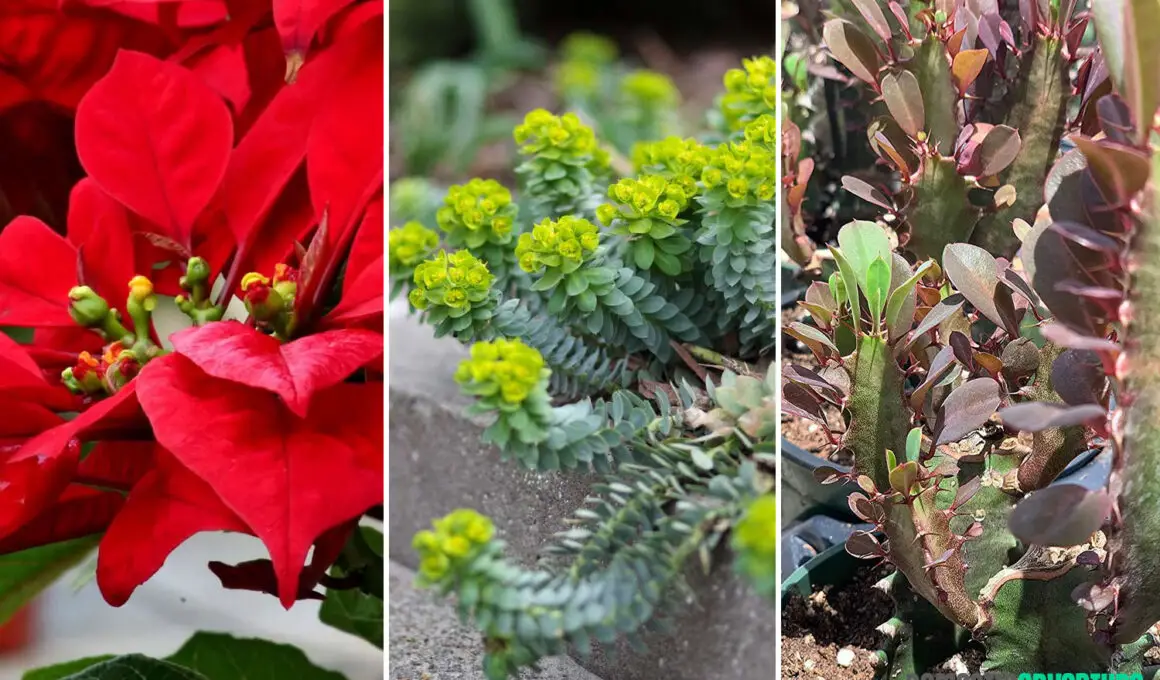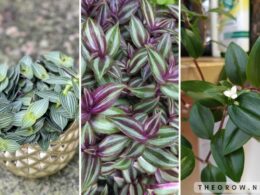In This Article Show
Euphorbia is a genus of plant found in the family Euphorbiaceae; it is one of the world’s largest genera of flowering plants. Its varieties are the most versatile plants for the garden. Euphorbia contains many species of different shapes, sizes, and colors, including some that are quite unusual and rare.
Whether you’re an experienced gardener or just starting, there’s something for everyone among the 28 Euphorbia varieties listed here. We’ll cover common varieties and rarer types you may not have heard of before with descriptions, features, and their growth needs.
If you want to add a unique flair to your garden or landscape, read on for all the information on these unique plants!
Euphorbia Plant Overview
Euphorbia is a large and diverse group of plants found worldwide. They can vary greatly in appearance, from small succulent-like plants to large trees. They are known for their unique flowers, clusters of small, inconspicuous flowers surrounded by colorful bracts.
| Common name | Euphorbia, Spurge |
|---|---|
| Scientific name | Euphorbia spp. |
| Family | Euphorbiaceae |
| Origin | Worldwide |
| Height | Can vary from a few inches to several feet tall |
| Leaves | Can vary in shape and color, ranging from green to gray or blue-green |
| Flowers | Usually small, inconspicuous, and green or yellow in color |
| Fruit | Capsules containing seeds |
| Season | Varies depending on species, can bloom year-round or seasonally |
| Climate | Can tolerate a wide range of temperatures and climates, depending on the species |
| Soil | Well-drained and nutrient-rich |
| Light | Can tolerate a wide range of light conditions, depending on the species |
| Watering | It varies depending on the species; some prefer dry conditions and consistently moist soil. |
| Propagation | Cuttings, seeds, or division of the roots. |
Euphorbia’s sap can be toxic and cause skin irritation, so gloves are essential when handling the plant.
28 Most Common And Rare Types Of Euphorbia
Here’s a list of some of the most popular and rarest Euphorbia varieties:
Get Gardening For Beginners
Our new EBOOK shows newcomers and green thumbs alike a step by step guide to growing the garden of their dreams.
1. Euphorbia Devil’s Backbone
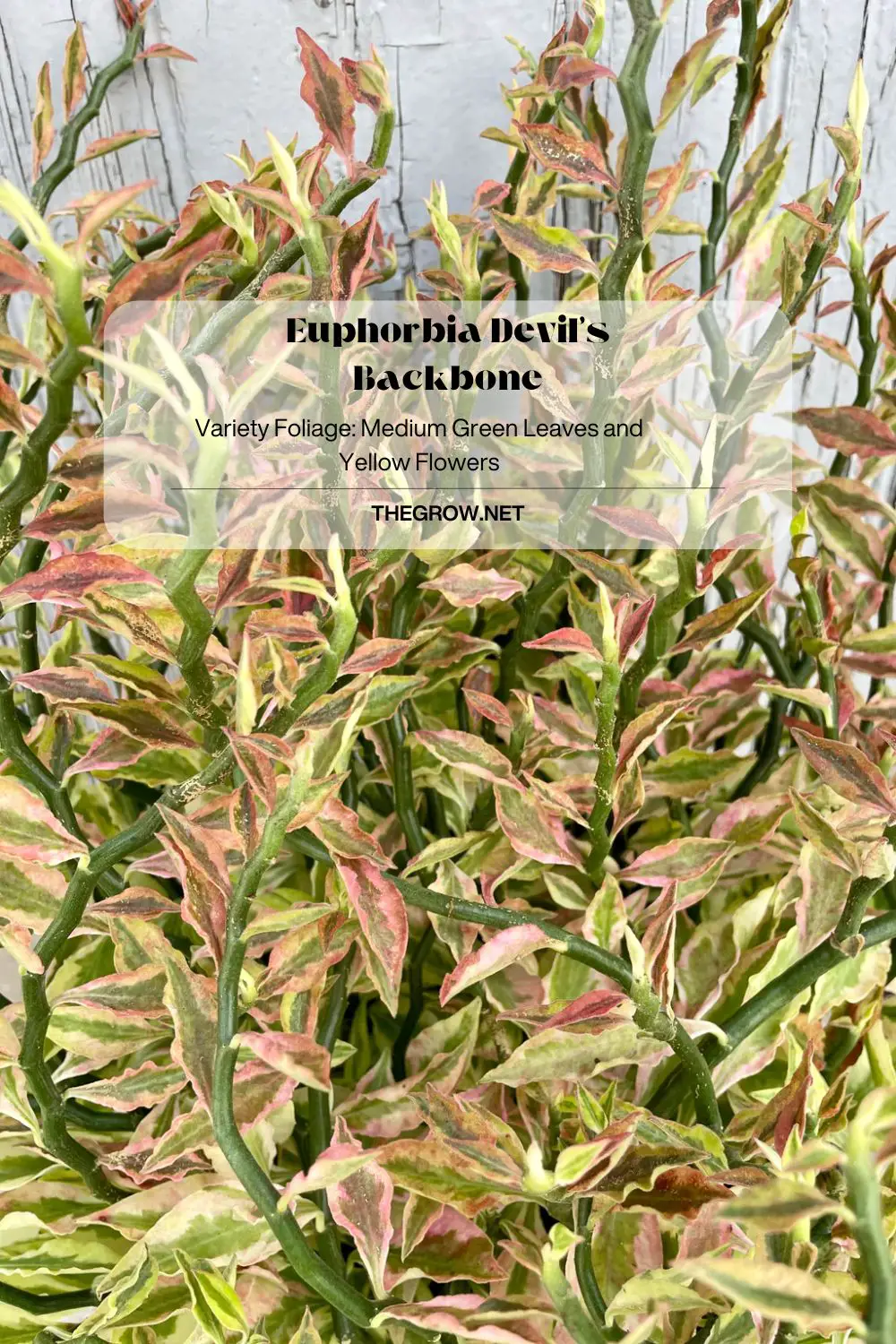
The Devil’s Backbone is a common type of Euphorbia that is native to the Mediterranean region. It gets its name from its long, thin, spiny stems that resemble a spine or backbone. The stems are covered in small, sharp thorns that can cause skin irritation if handled without gloves.
The plant produces small, yellow flowers that bloom in the spring and summer. The Devil’s Backbone is a low-maintenance plant that is easy to care for.
It is drought-tolerant and does not need much water or fertilizer to thrive. This makes it a good choice for those who want a beautiful, easy-care plant for their garden.
2. Caribbean Copper Plant Euphorbia
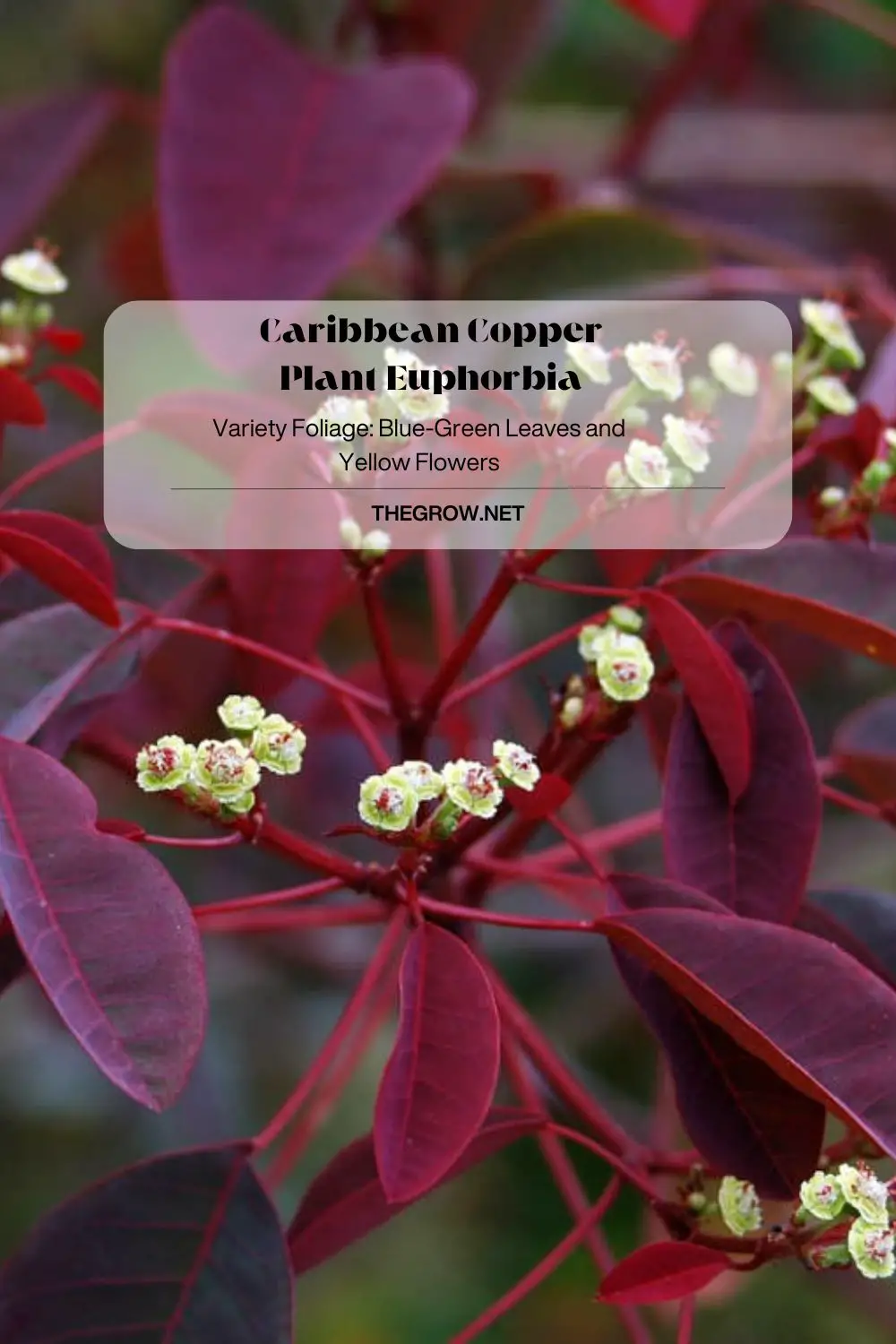
The Caribbean Copper Plant (Euphorbia ammak), is a species of flowering plant in the family Euphorbiaceae, native to the Horn of Africa and the Arabian Peninsula. It is a succulent perennial, growing to 1 m (3 ft) tall and wide, with blue-green leaves and yellow flowers.
This plant is drought-tolerant and can tolerate poor soils. It prefers full sun to partial shade and needs good drainage.
The Caribbean Copper Plant is not frost-hardy but can be grown in containers that can be brought indoors over winter. The plant produces a poisonous sap if ingested and can cause skin irritation if it comes into contact with the skin.
3. Poinsettia Euphorbia
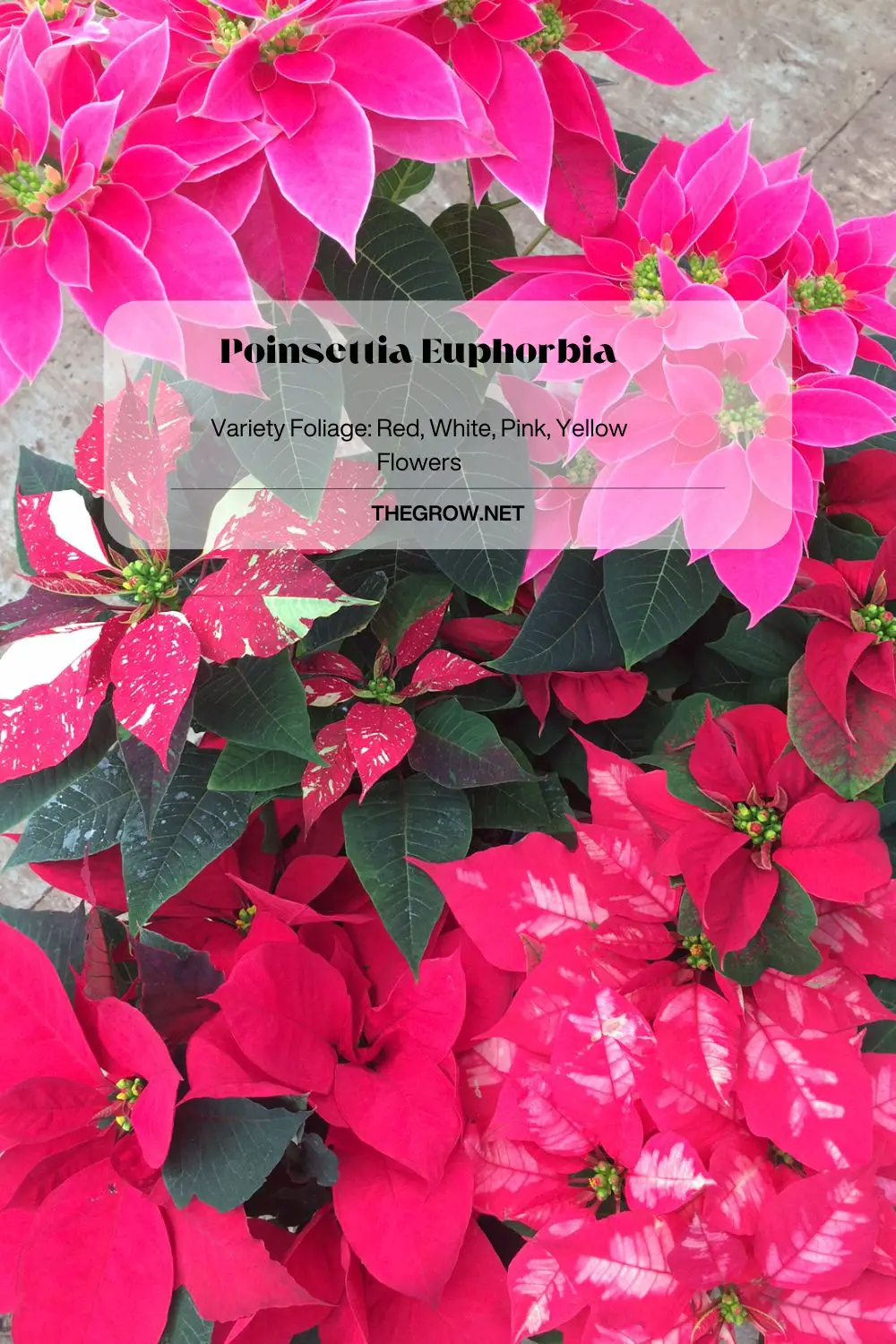
The poinsettia is a beautiful plant that is native to Mexico. It has large, colorful leaves that are often used to decorate homes and offices during the holiday season. The poinsettia is also known as the “Mexican fire plant” or the “Christmas flower.”
Get Gardening For Beginners
Our new EBOOK shows newcomers and green thumbs alike a step by step guide to growing the garden of their dreams.
Poinsettias come in a variety of colors, including red, white, pink, and yellow. They typically bloom in late fall or early winter. When choosing a poinsettia, look for one with healthy leaves and few buds. The plant should be firm and not wilted.
If you’re buying a potted plant, ensure drainage holes are in the bottom, so excess water can escape. To care for your Poinsettia, place it in a bright location but out of direct sunlight. Water when the soil feels dry to the touch and fertilize monthly with a balanced fertilizer.
4. Desert Candle Euphorbia
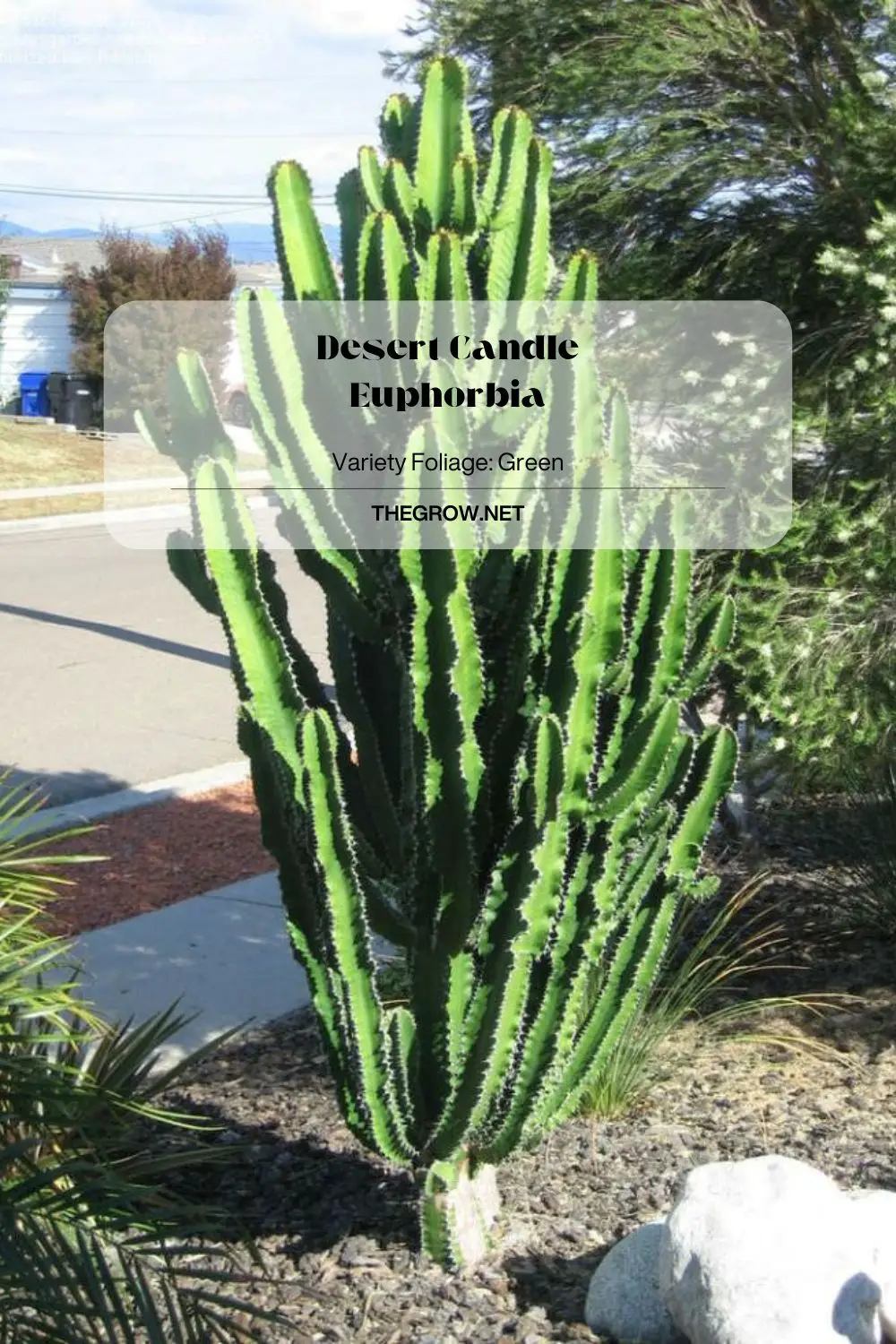
Desert Candle (Euphorbia Ceratocarpa) is a small to medium-sized Euphorbia, native to dry regions of Africa. It is a slow-growing, but long-lived plant, and can reach up to 1.5 m in height. The stem is thick and woody, with sparse branches bearing small leaves.
The flowers are tiny and insignificant, but the fruits are large and fleshy, resembling miniature watermelons. It is also a popular ornamental plant, prized for its unusual appearance and drought tolerance. The Desert Candle is poisonous so keep away from kids and pets.
5. Pencil Cactus Euphorbia
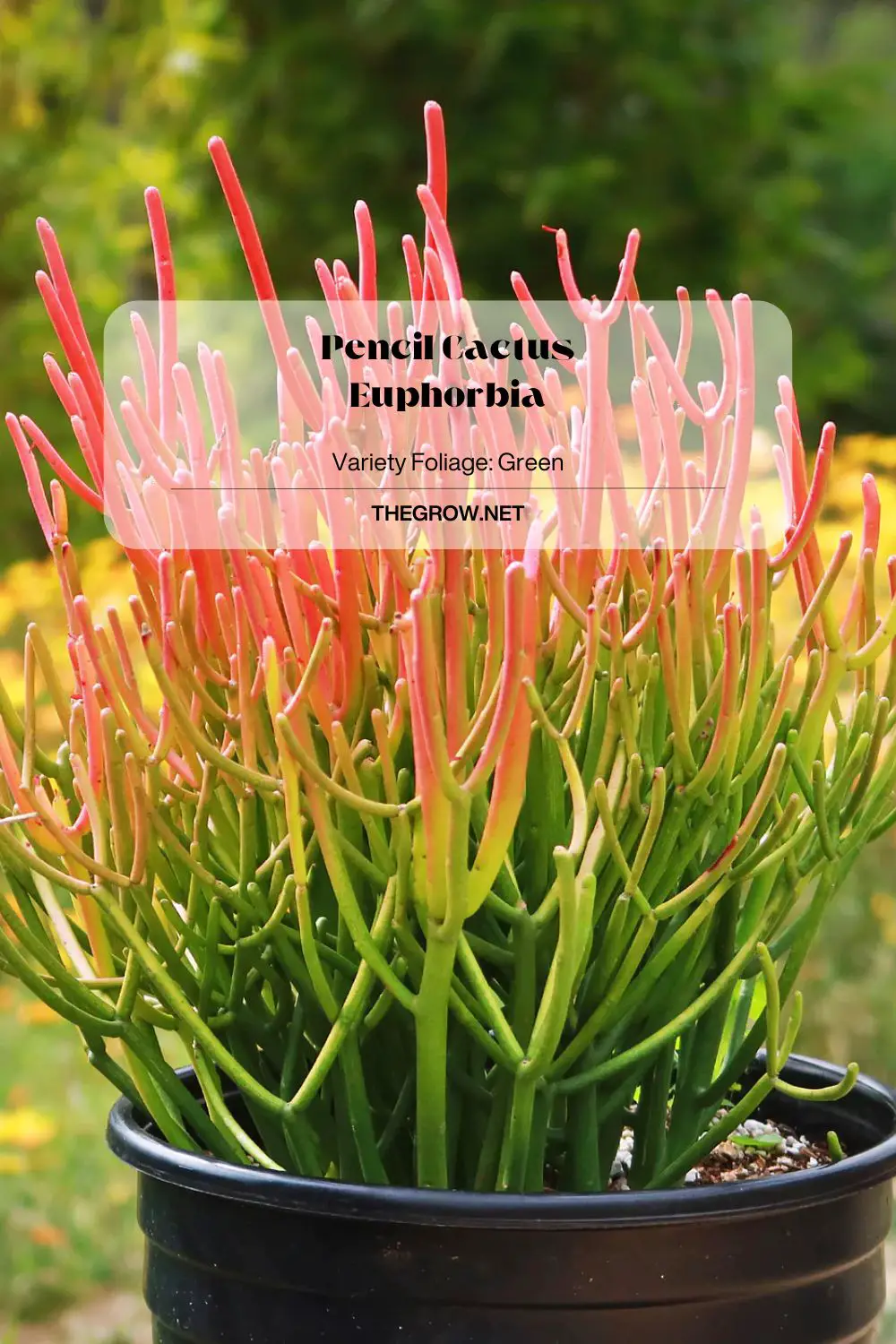
The Pencil Cactus, Euphorbia tirucalli, is a succulent plant that grows in the arid regions of Africa and India. The Pencil Cactus gets its name from its thin, cylindrical stems that resemble pencils. The plant is also known as the Milk Bush or Indian Tree because of the milky sap that exudes from its stems when they are cut.
The Pencil Cactus is a low-maintenance plant that does not require much water or fertilizer to thrive. It prefers well-drained soil and can be grown in full sun or partial shade.
This tough little plant is very tolerant of drought and can even survive being buried under sand during a desert storm. The pencil cactus is worth considering if you are looking for a unique succulent to add to your collection.
6. African Milk Tree Euphorbia
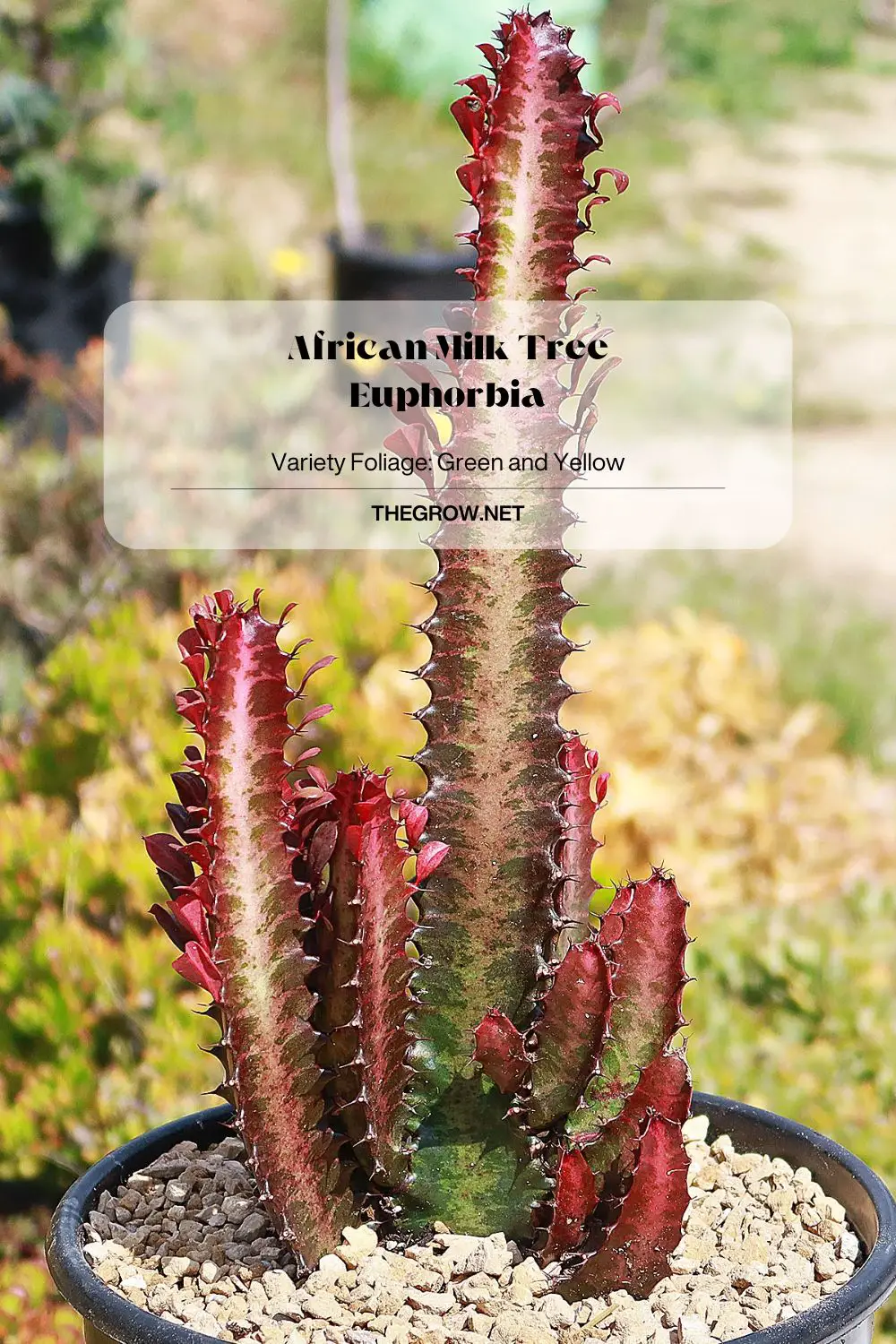
The African Milk tree, also known as the candelabra cactus, is a type of Euphorbia that is native to Africa. It is a succulent plant that can grow up to 20 feet tall, with a thick trunk and branches that are covered in spines.
The leaves of the African Milk Tree are small and oval-shaped, and they produce small yellow flowers. The sap of the African milk tree is milky white and contains a toxic substance that can cause skin irritation.
7. Dragon Bones Tree Euphorbia
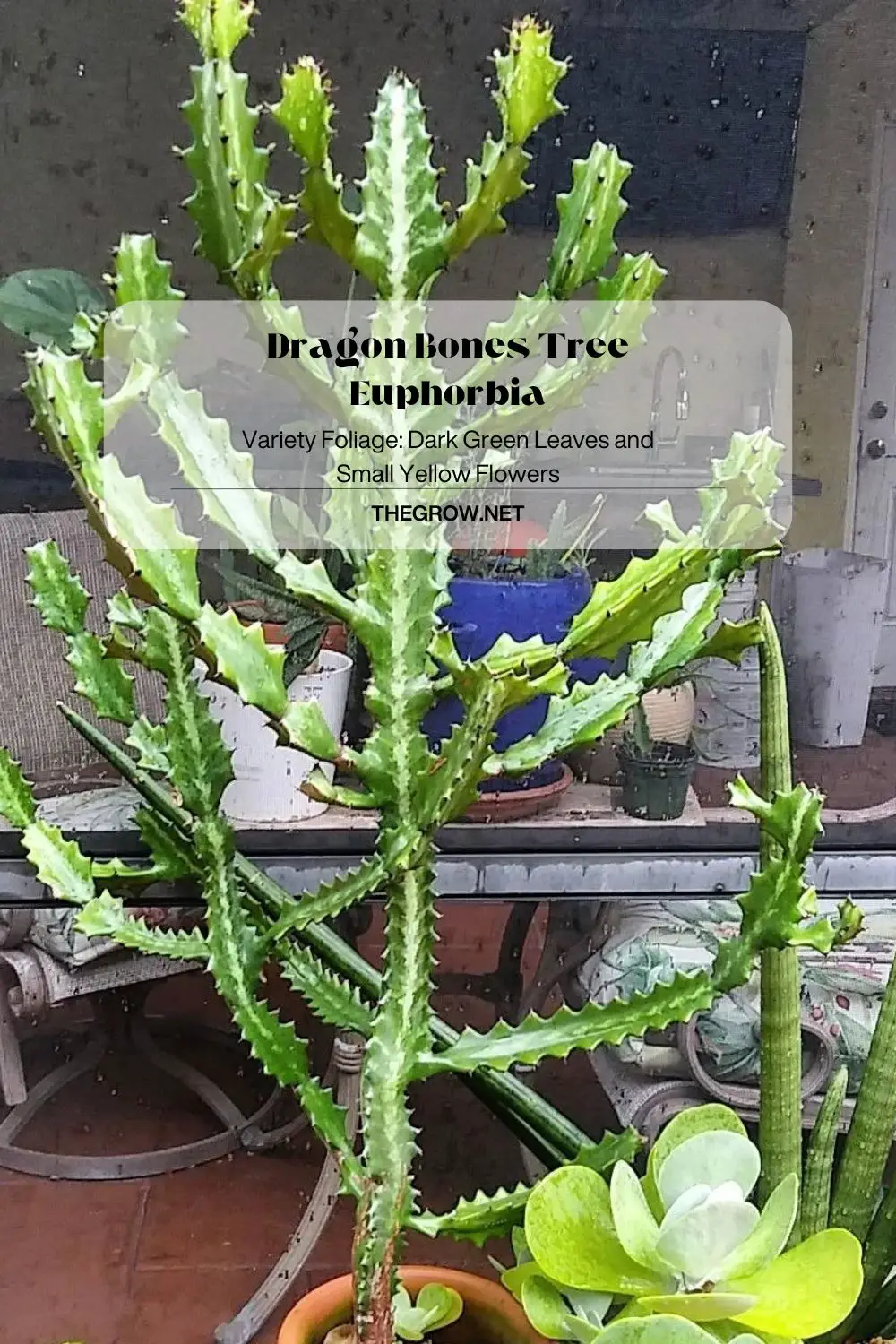
The Dragon Bones Tree, or Euphorbia Trigona, is a native of Africa and a member of the spurge family. It gets its name from its three-sided stems which resemble dragon bones.
This tree is slow-growing and can reach up to 15 feet tall. It has dark green leaves and produces small yellow flowers. The Dragon Bones Tree is an easy plant to care for and is drought-tolerant. Cuttings or seedlings can propagate it.
8. Crown of Thorns Euphorbia
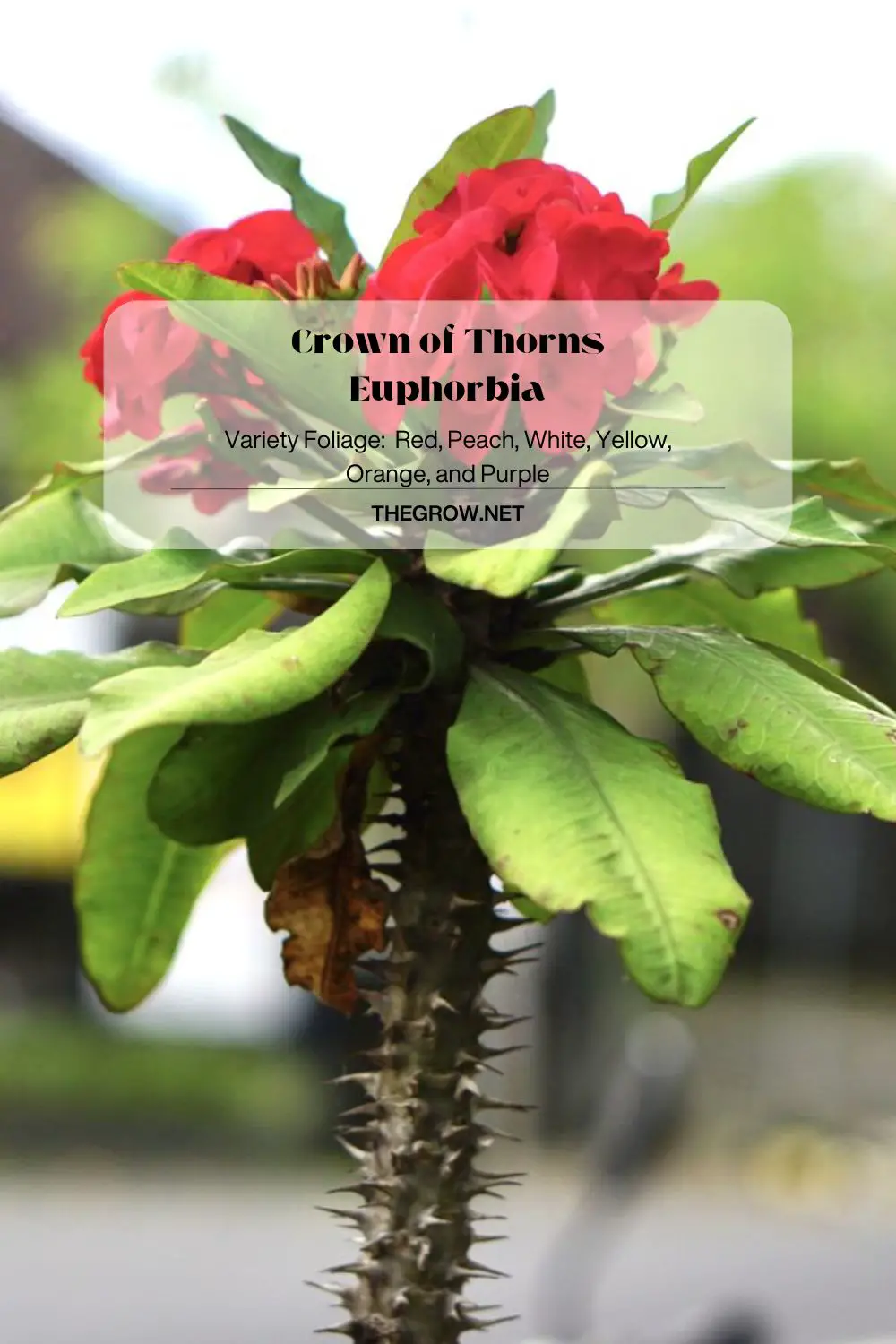
The Crown of Thorns is a beautiful, but deadly plant. It is a member of the Euphorbia family, and its sap is poisonous. The plant gets its name from the sharp thorns that cover its stems. The thorns can puncture the skin, and the sap can irritate.
If ingested, the sap can cause vomiting and diarrhea. The Crown of Thorns is native to Madagascar but has been introduced to other parts of the world, including Europe and North America.
Fertilize monthly during the growing season (spring through summer), but skip fertilizer during the fall and winter months. If you’re looking for a unique addition to your indoor jungle, consider the crown of thorns. Be sure to handle it carefully; this beautiful plant has some serious spikes!
9. Wood Spurge Euphorbia
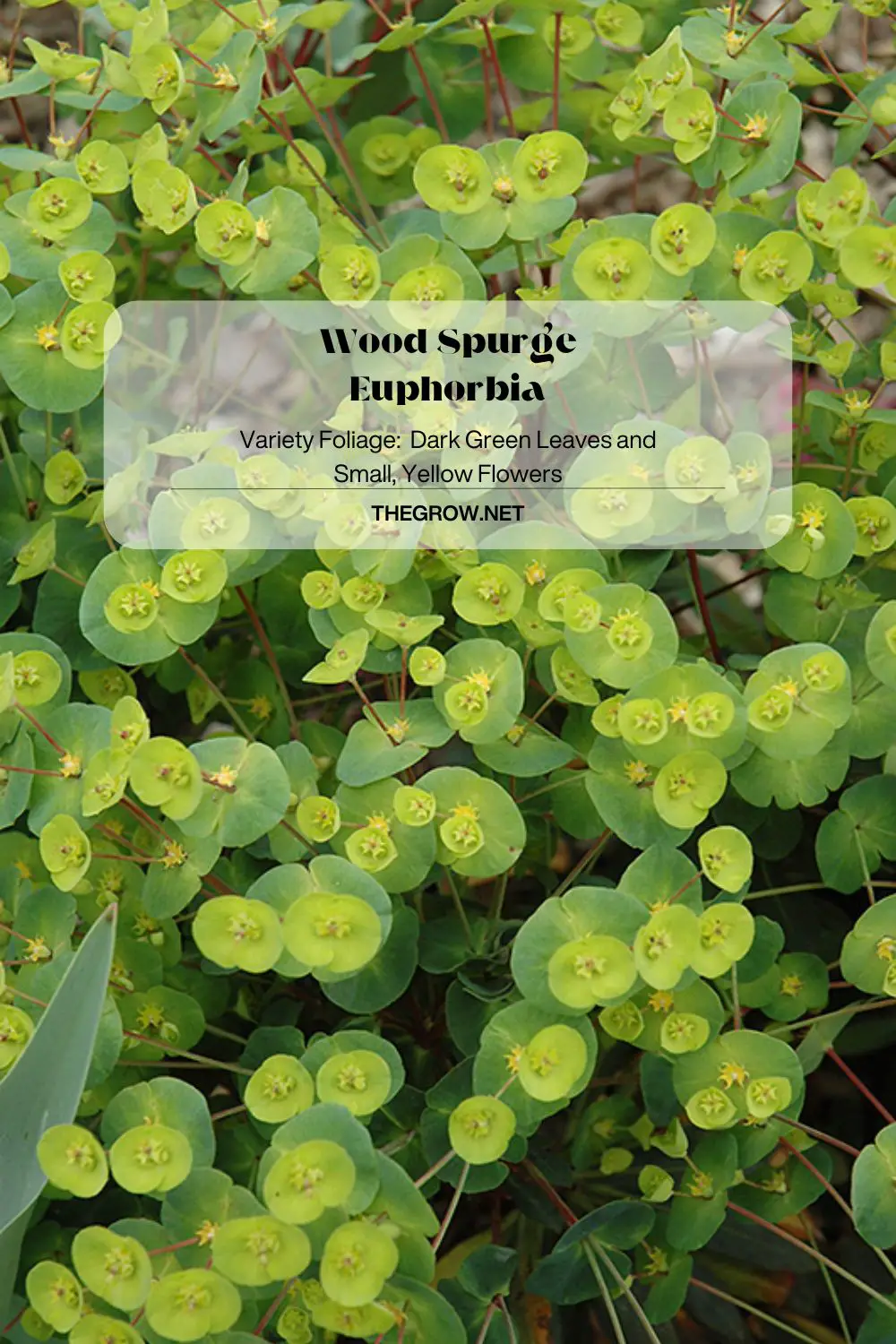
Wood spurge, also known as Euphorbia amygdaloides, is a beautiful evergreen succulent that is native to Europe. This plant has glossy, dark green leaves and small, yellow flowers that bloom in the spring. Wood spurge is a low-maintenance plant that is perfect for gardens or borders. This plant is also deer-resistant and drought-tolerant.
10. Donkey Tail Spurge Euphorbia
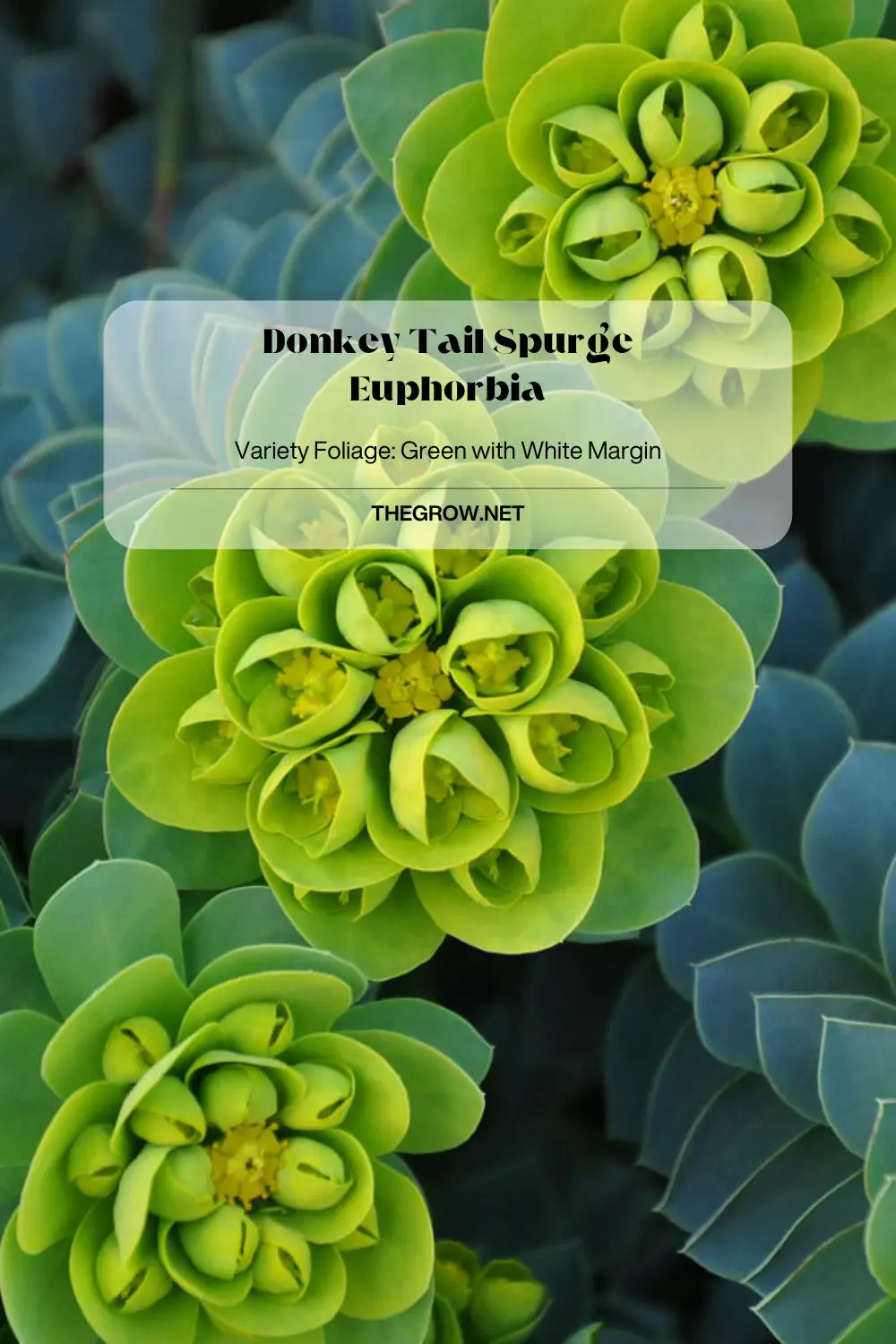
Donkey Tail Spurge (Euphorbia myrsinites) is a succulent plant native to the Mediterranean region. It is characterized by its long, narrow leaves resembling a donkey’s tail. The leaves are arranged in a rosette pattern and are green with white margins.
Donkey Tail Spurge grows best in full sun to partial shade and well-drained soil. It is drought-tolerant and requires little maintenance.
11. Basketball Euphorbia
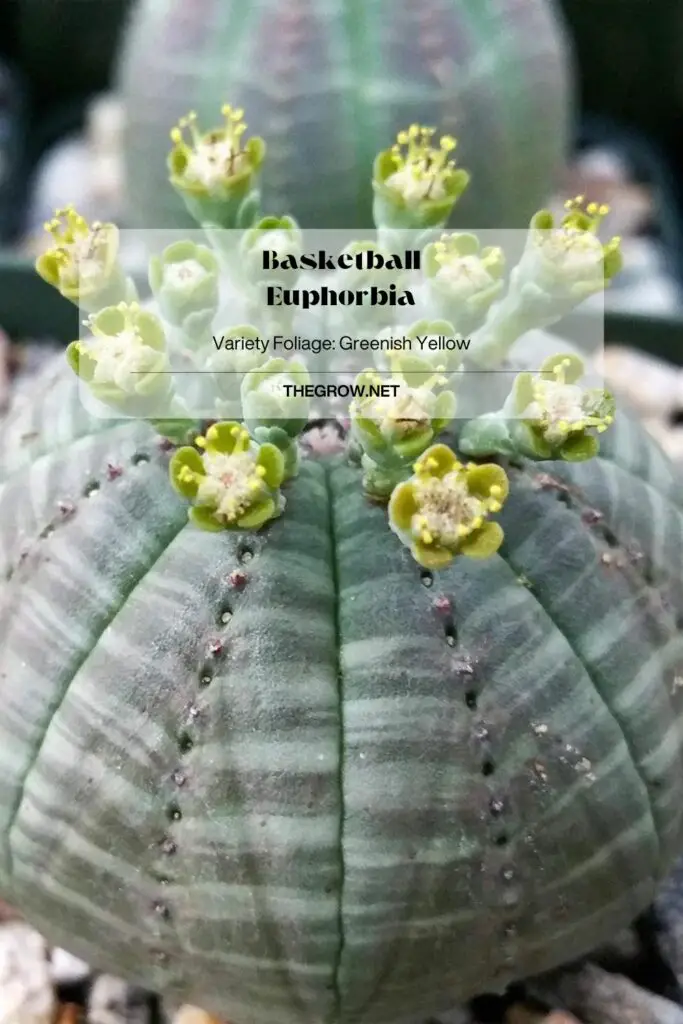
Basketball Euphorbia, or Euphorbia obesa, is a small, round succulent that resembles a mini basketball. It’s native to South Africa and can be found in the wild growing on rocky hillsides. This Euphorbia variety is drought tolerant and does well in bright light, making it a great choice for those who are new to growing succulents.
Basketball Euphorbia is not frost-hardy, so if you live in an area with cold winters, it’s best to grow this plant indoors.
12. Cushion Spurge Euphorbia
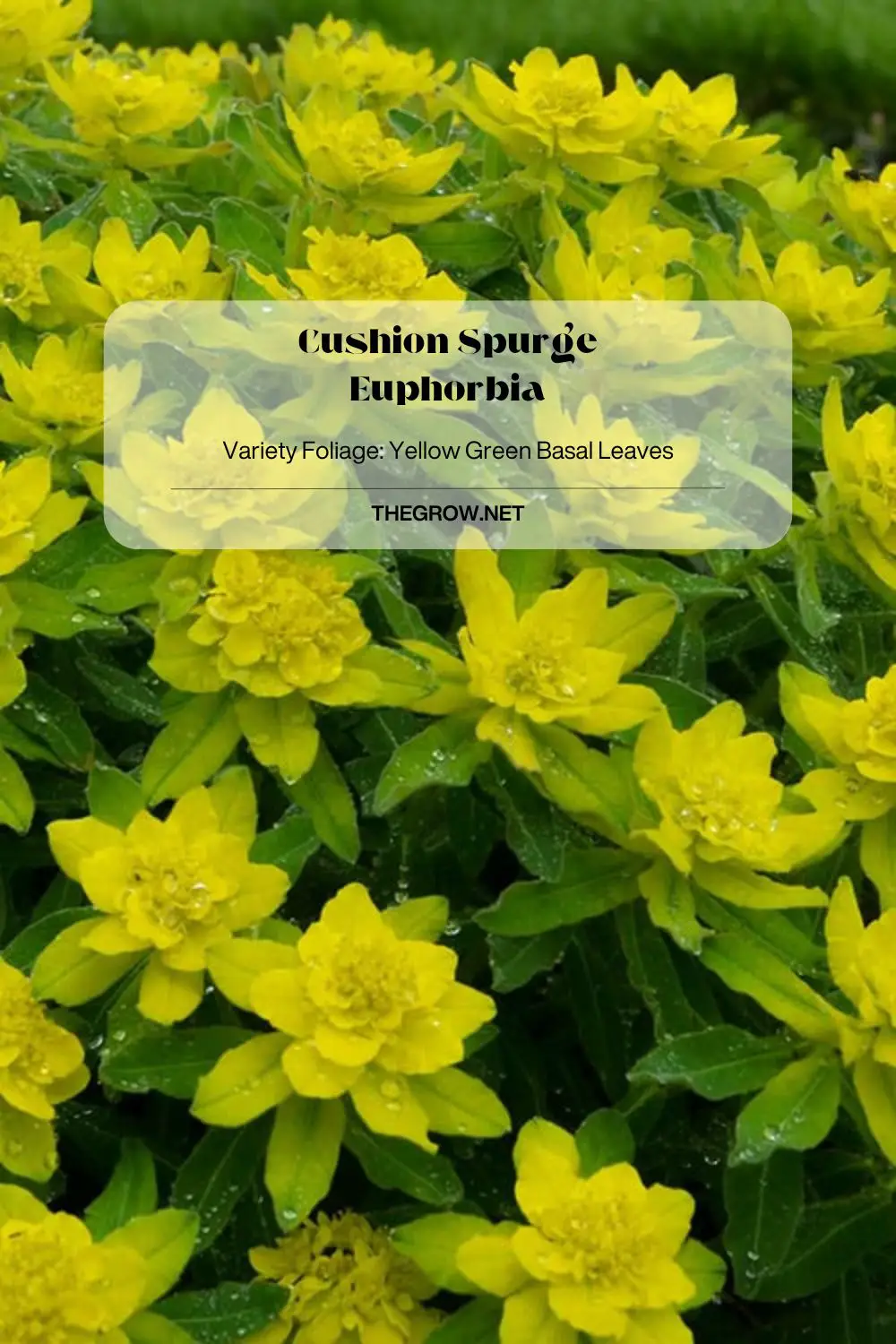
Cushion spurge (Euphorbia polychroma) is a perennial herbaceous plant native to central and southern Europe. It grows to 30–60 cm (12–24 in) tall, with a rosette of yellow-green basal leaves and stem leaves. The flowers are small and greenish-yellow, blooming from May to June.
This variety is named for its cushioned appearance, created by the dense clusters of leaves at the base of the plant. It is a relatively low-maintenance plant and can tolerate some drought and shade. Cushion spurge is often used as an ornamental plant in gardens and parks.
13. River Euphorbia
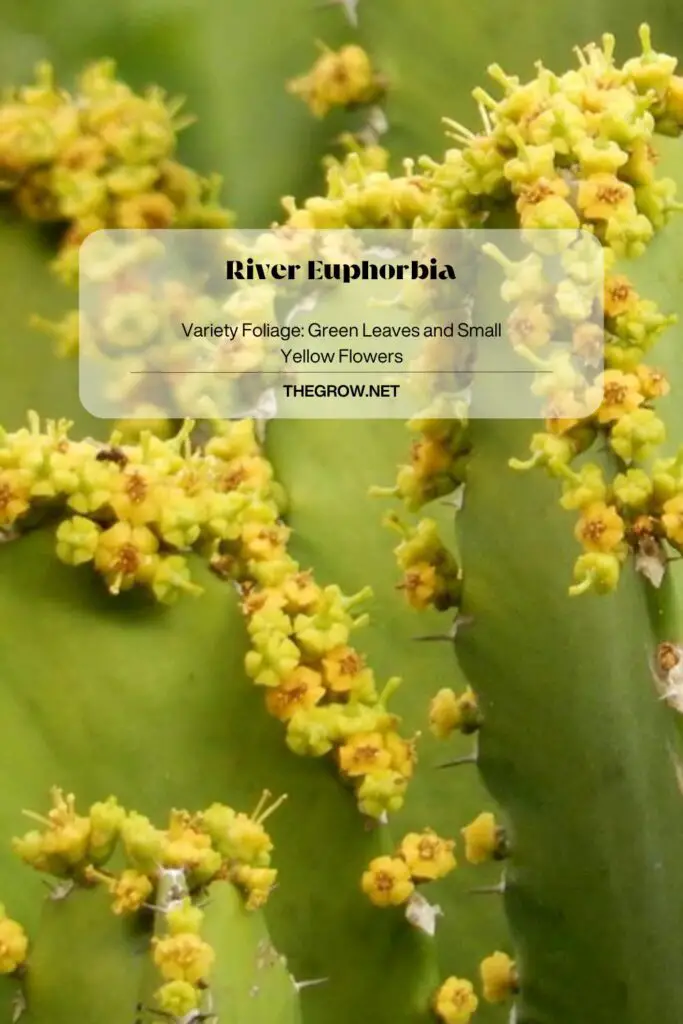
The River Euphorbia is native to South Africa. It is a succulent plant that grows in a rosette form. The leaves are green and have white spots on them. The flowers are small and yellow. The River Euphorbia is a great plant for beginners because it is easy to care for.
The River Euphorbia does not require much water and can tolerate some neglect. This plant can be propagated by cutting off a piece of the stem and planting it in a new potting mix.
14. Pencil Milkbush Euphorbia
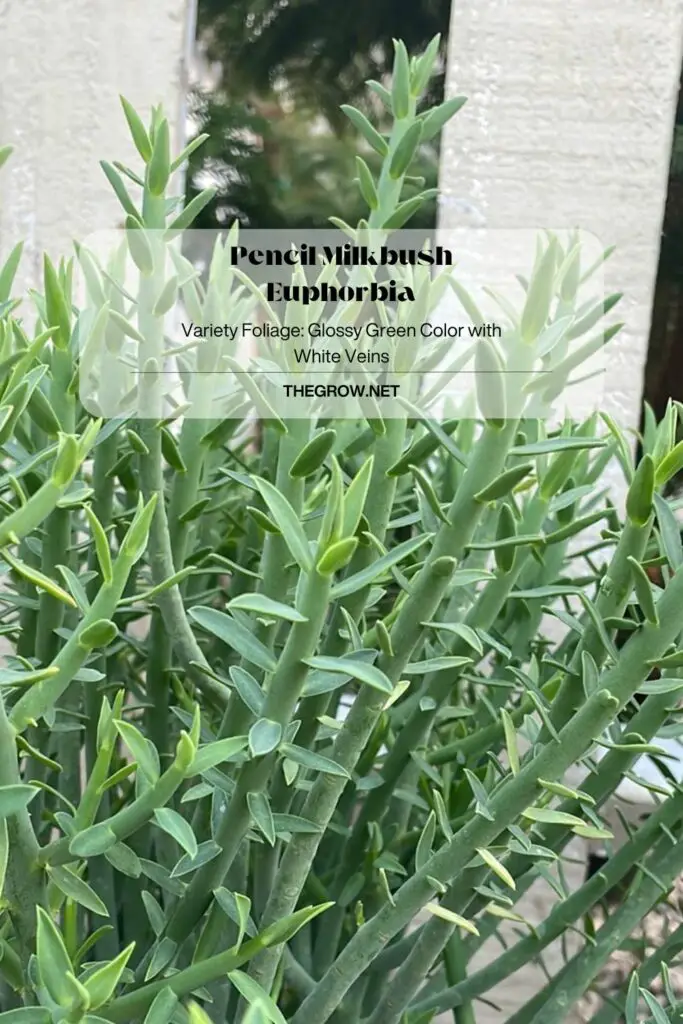
This small, pencil-sized Milkbush is a native of Madagascar. It is an evergreen shrub that can grow up to 10 feet tall. The leaves are narrowly oblong and taper to a point at the end. They are a glossy green color with white veins running throughout. The flowers are small and yellow. They bloom from spring to summer.
15. Euphorbia Debilispina
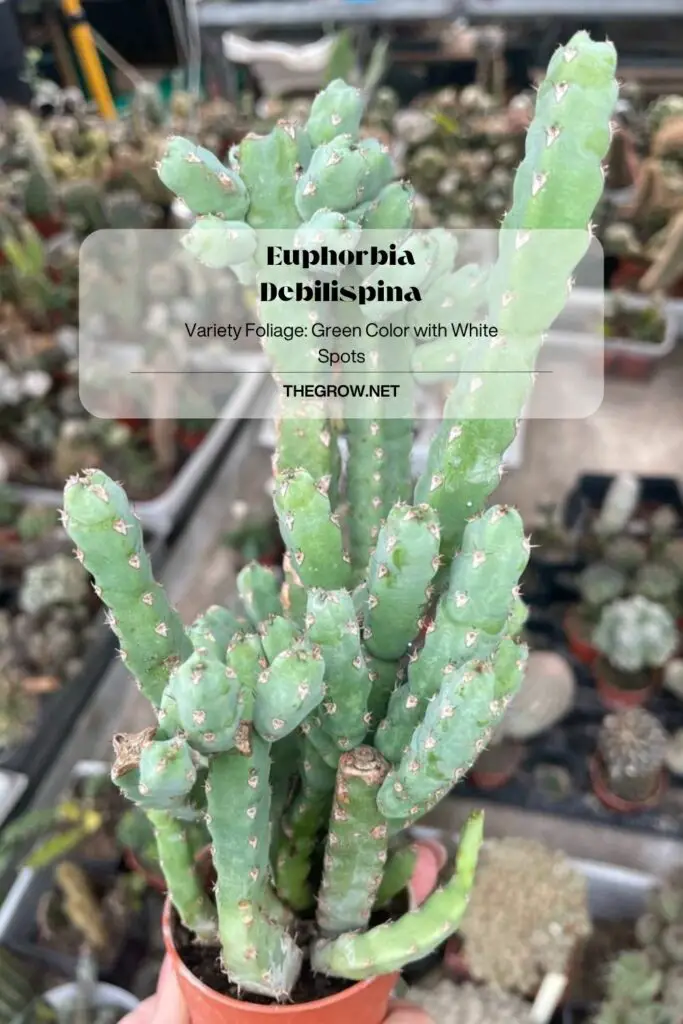
Euphorbia debilispina is a small, evergreen succulent that forms rosettes of thick, fleshy leaves. The leaves are green with white spots and have a slightly waxy coating.
The flowers are small and yellow and bloom in spring and summer. Debilispina is native to South Africa and can be found in the wild in rocky areas.
16. Leafless Spurge Euphorbia
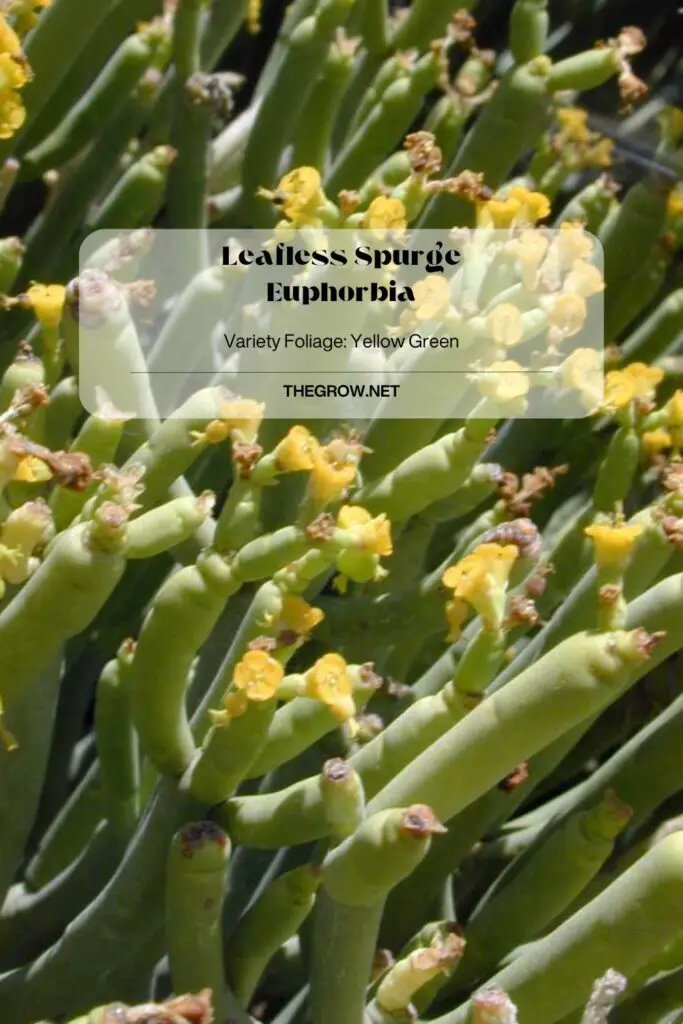
Leafless spurge (Euphorbia lathyris) is a common type of spurge often found in gardens. This perennial plant can reach up to 2 feet in height and produces small, yellow flowers. The Leafless Spurge is a tough and adaptable plant that can thrive in various conditions.
It’s an excellent choice for adventurous gardeners who want to experiment with different planting techniques.
This plant is also perfect for those who want to add a touch of greenery to their home without having to worry about watering it regularly. Leafless spurge is a low-maintenance plant that is easy to grow.
17. String of Stars Euphorbia
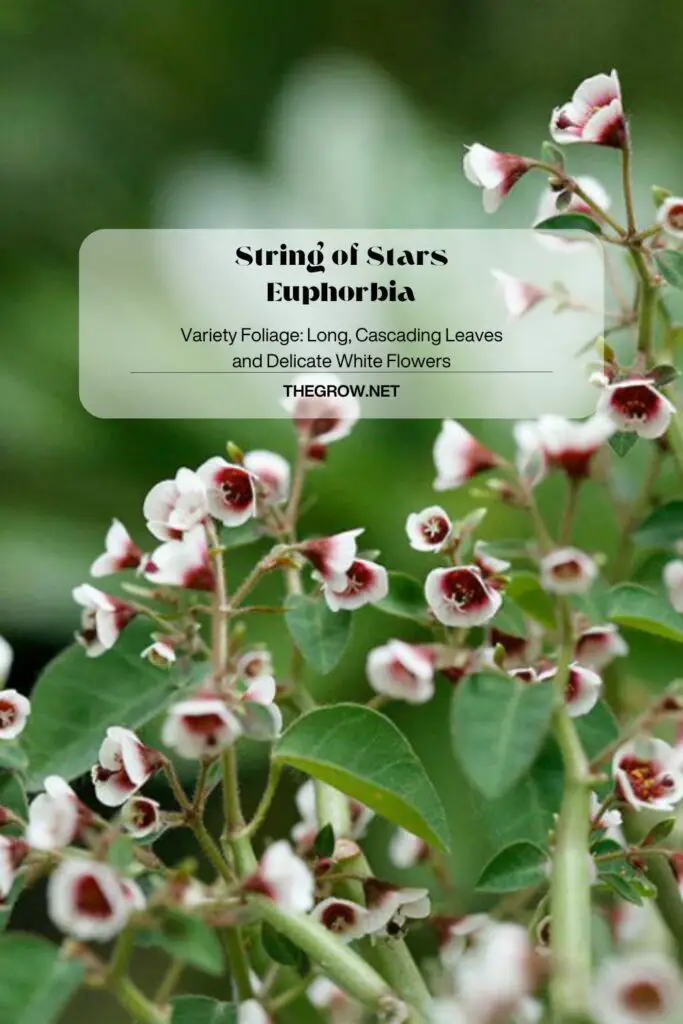
The String of Stars euphorbia is a beautiful, full-length plant that is perfect for any gardener. This plant gets its name from its long and thin stems that are covered in flowers. With its long, cascading leaves and delicate white flowers, this plant is sure to make any garden stand out. If you’re looking for a truly unique Euphorbia variety, then you might want to check out the string of stars.
18. Red Monadenium Euphorbia
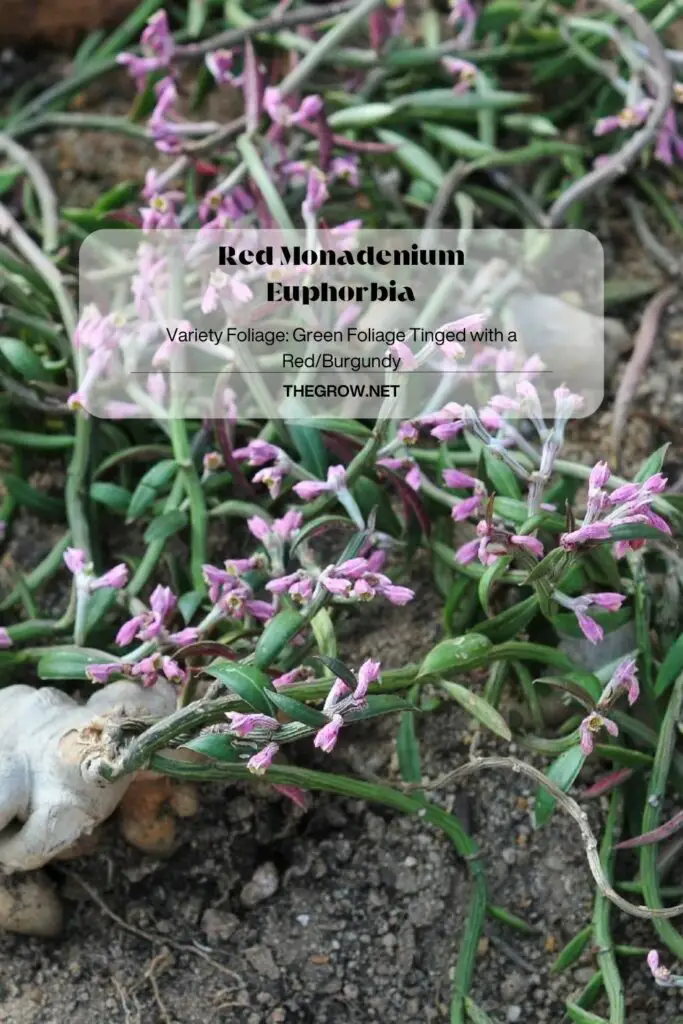
Red Monadenium is a type of Euphorbia that is native to East Africa. This variety has an unusual shape so it should be grown in attractive containers to enhance its spectacular feature. It is a succulent plant that can grow up to 3 feet tall and has reddish-brown stems with small, green leaves. The flowers are small and yellow, and they bloom in the summer.
19. Antique Spurge Euphorbia
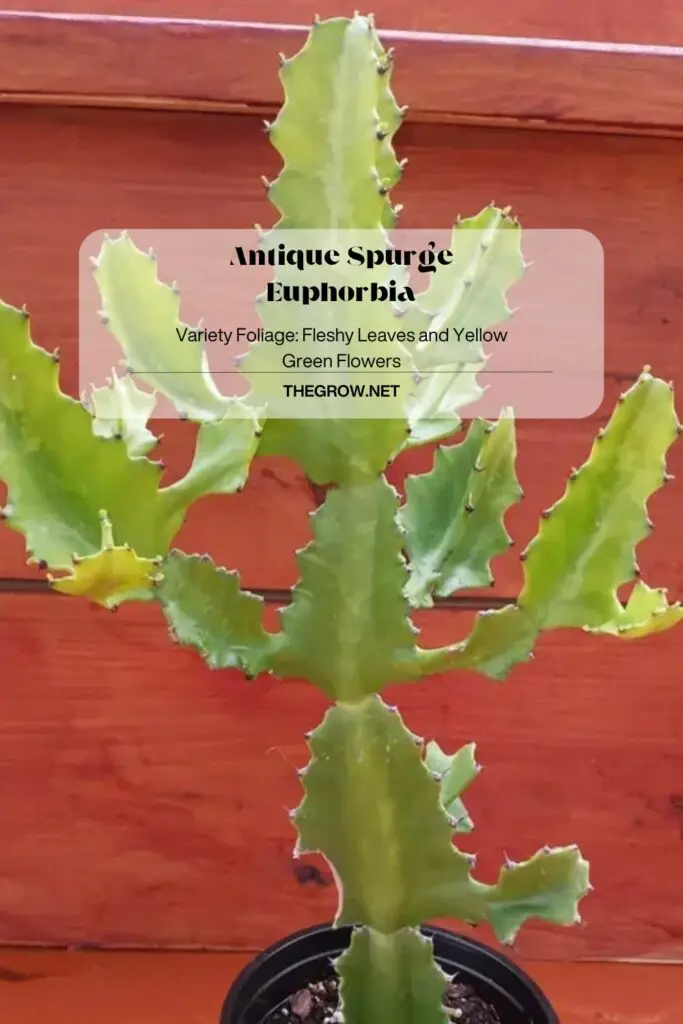
The Antique Spurge (Euphorbia antiquorum) is a beautiful, unique plant that is native to the Mediterranean region. It has been used for centuries as an ornamental plant and is prized for its striking appearance. The Antique Spurge is characterized by its large, fleshy leaves and distinctive, yellow-green flowers.
It prefers full sun and well-drained soil. Once established, it is relatively drought tolerant. This tough plant can reach up to 2 feet tall and wide.
The Antique Spurge is a great choice for gardeners looking for a low-maintenance, easy-to-grow plant that adds interest and beauty to the landscape.
20. Damask Euphorbia
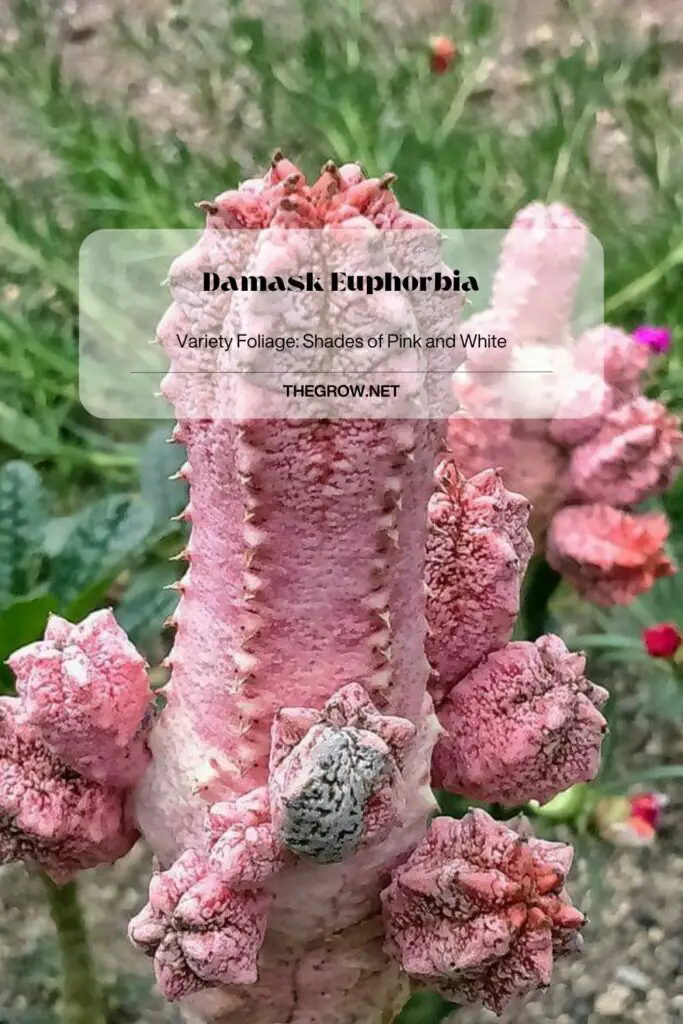
The damask rose, Rosa x Damascena, is a rose variety that is believed to have originated in Damascus, Syria. It is a popular garden plant in many parts of the world and has been cultivated for centuries. The Damask rose is characterized by its small, delicate flowers and strong fragrance.
It typically blooms in shades of pink and white, but there are also varieties with red and yellow flowers. The damask rose is a perennial plant that grows to about 1–2 meters in height. It has dark green leaves and thin, curved stems. The flowers are usually about 2-3 cm in diameter and have 5 petals each. They are borne in clusters of 3–5 blooms and have a strong fragrance.
21. Vulcanorum Euphorbia
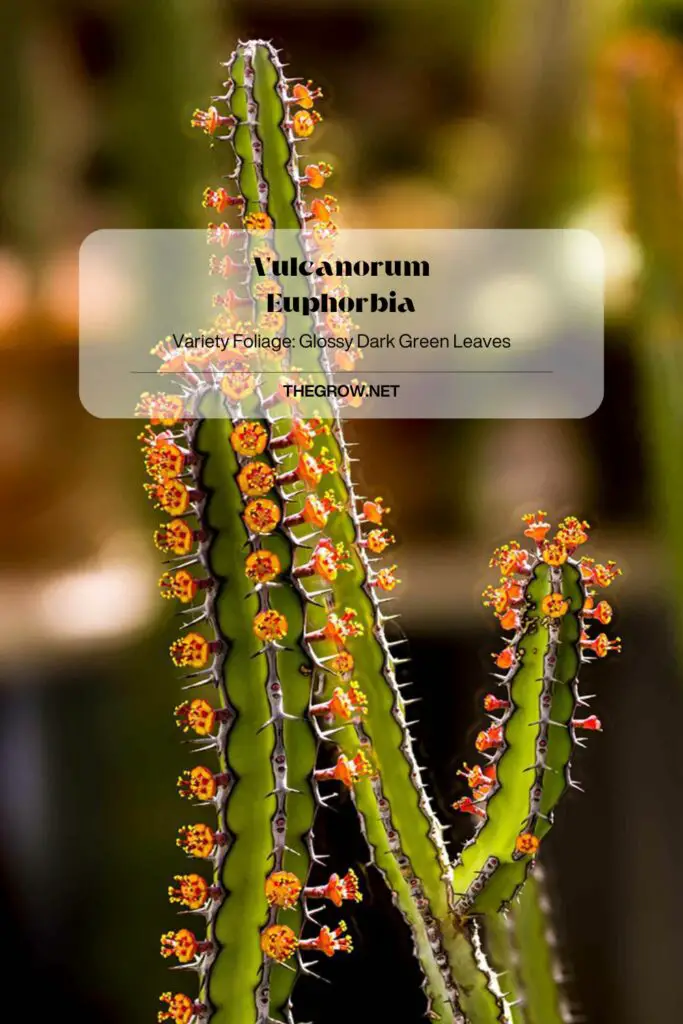
Vulcanorum is a variety of Euphorbia that is native to the Canary Islands. It is a small, evergreen shrub that typically reaches a height of 2-3 feet and has glossy, dark green leaves.
During their bloom time in spring and summer, Vulcanorum produces small and yellow flowers. Vulcanorum is a drought-tolerant plant that does well in full sun or partial shade.
22. Baioensis Euphorbia

Euphorbia baioensis is a succulent plant in the genus Euphorbia, native to Somalia. It is a stemless or sparsely branched shrub growing to 30 cm (12 in) tall. The leaves are obovate, up to 5 cm (2 in) long, with a reddish-brown margin. The flowers are yellow, and the stamens are red.
23. Cliff Spurge Euphorbia
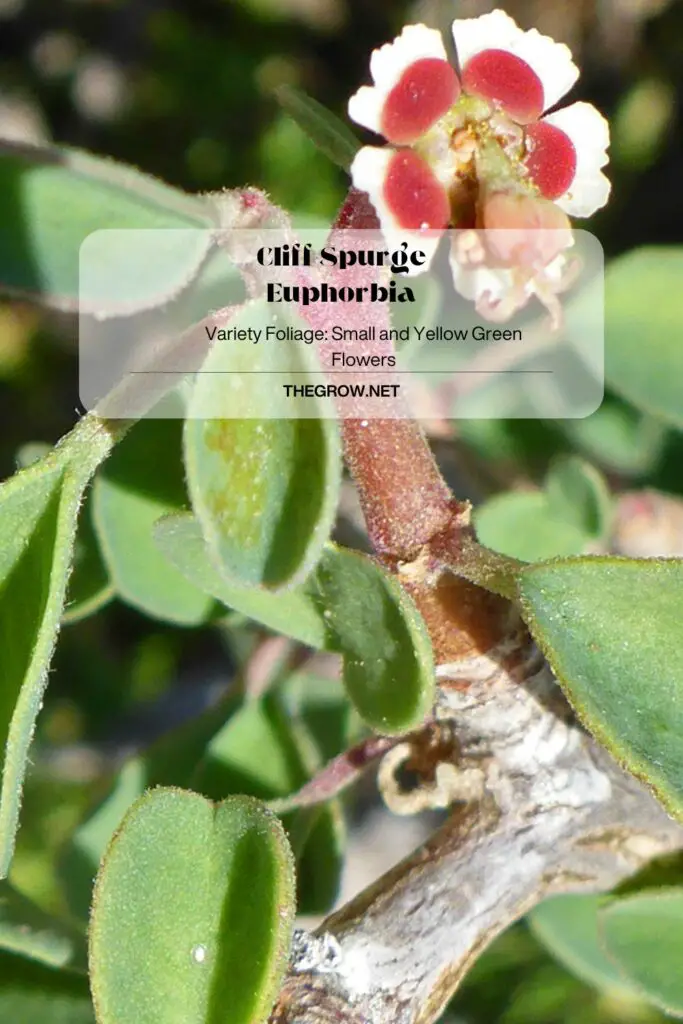
Cliff spurge (Euphorbia ammak), also known as African Milk Bush, is a succulent plant native to the Horn of Africa. It is a member of the Euphorbiaceae family and can grow up to 6 feet tall. The leaves are ovate-shaped and have a milky sap that can cause skin irritation. The flowers are small and yellow-green. Cliff spurge is drought-tolerant and does well in full sun or partial shade.
24. Indian Spurge Tree Euphorbia
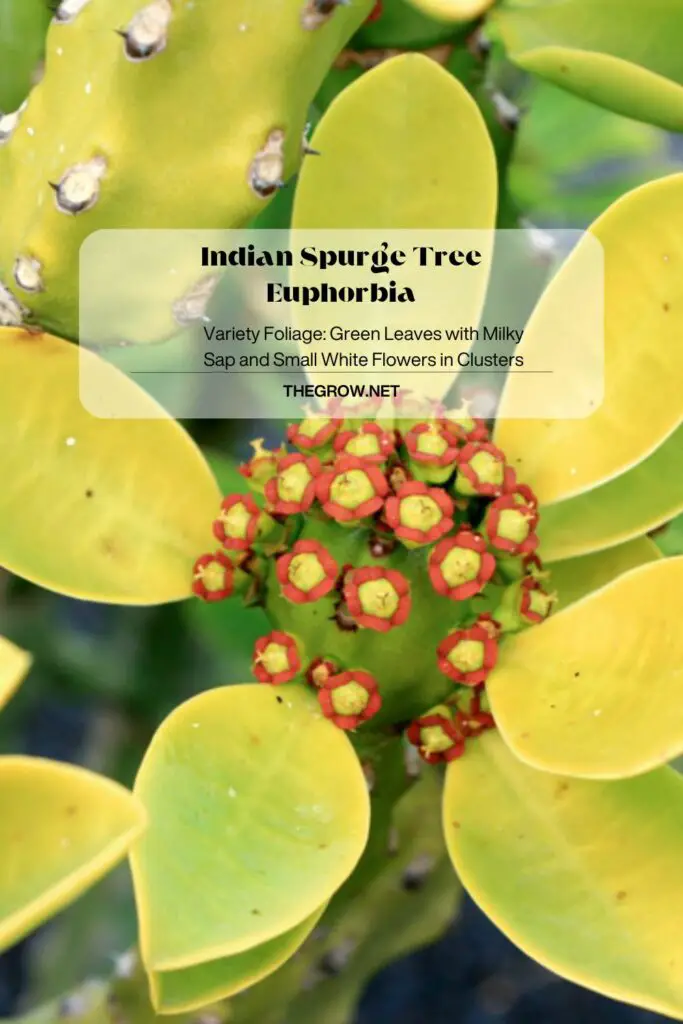
The Indian Spurge tree, also known as the Milkweed tree, is a member of the Spurge family. It is native to India and Sri Lanka. The Indian Spurge tree is a large shrub or small tree, growing to a height of 10-15 m.
The leaves are opposite, oblong-elliptic in shape, and can reach 5-10 cm in length and 2-5 cm in width. The leaves are green and have a milky sap. The flowers are small, white, and borne in clusters at the ends of the branches. The fruit is a capsule containing two seeds.
25. African Candelabra Euphorbia
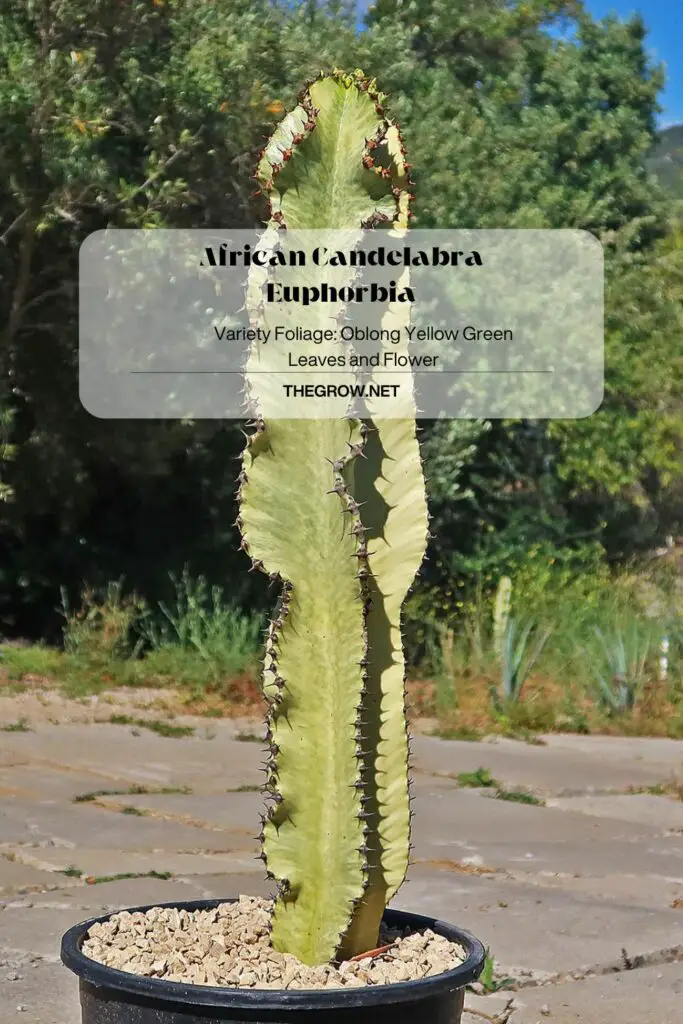
The African Candelabra, or Euphorbia ingens, is a large, succulent tree that originates from Africa. It can grow up to 30 feet tall and has a thick trunk with branchless stems that are covered in sharp spines. The leaves are small and oblong, and the flowers are tiny and yellow-green. The African Candelabra is an eye-catching plant that makes a great addition to any succulent collection.
26. False Globose Spurge Euphorbia
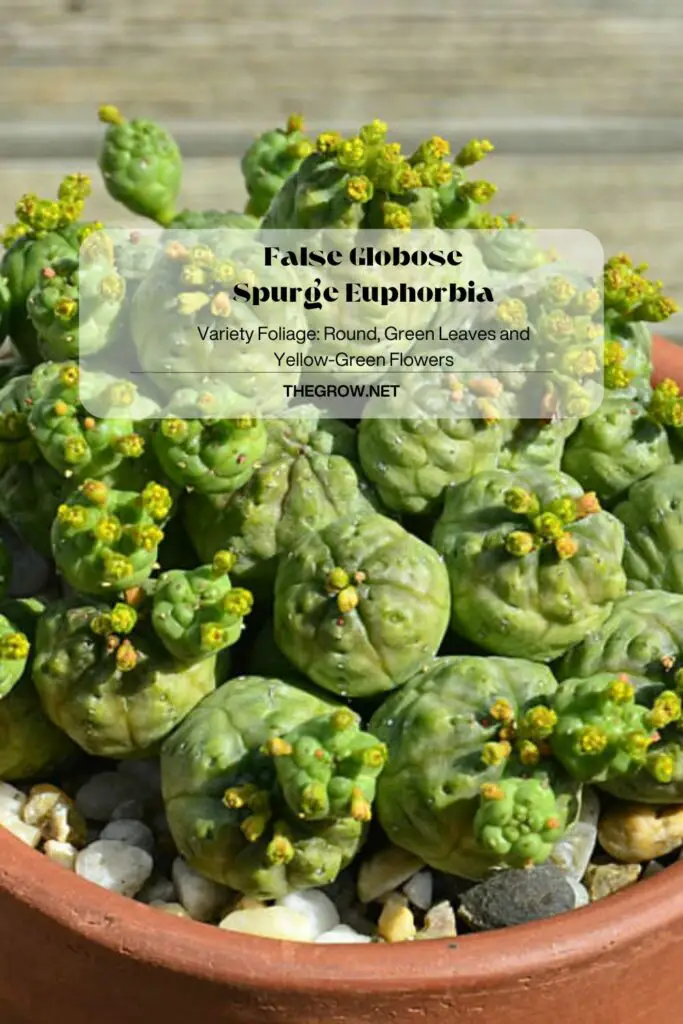
If you’re looking for an eye-catching, low-maintenance plant to add to your landscape, false globose spurge (Euphorbia hypericifolia ‘Inneuphdia’) is a great option. This perennial plant is native to Europe and Asia, and it’s characterized by its round, green leaves and yellow-green flowers. False globose spurge is relatively easy to care for, and it’s tolerant of both full sun and partial shade.
27. Decaryi Euphorbia
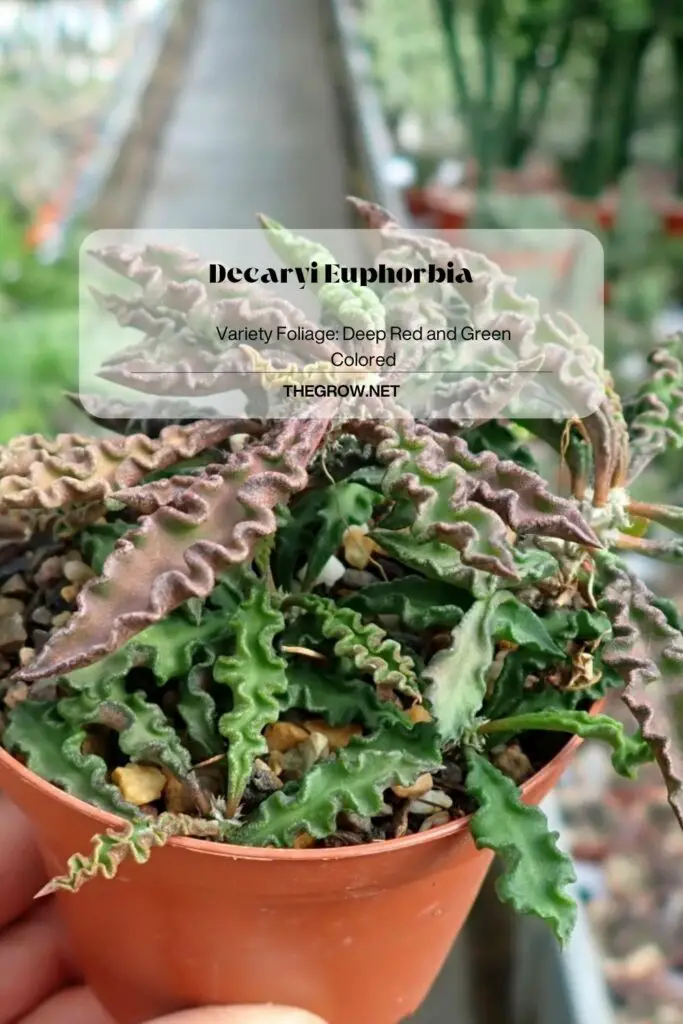
This variety is native to Madagascar, and it is characterized by its small size and round leaves. The flowers are white and have a yellow center, and they bloom in the springtime. Decaryi is a very popular type of Euphorbia, and it is often used as an ornamental plant in gardens.
28. Snowbush Euphorbia
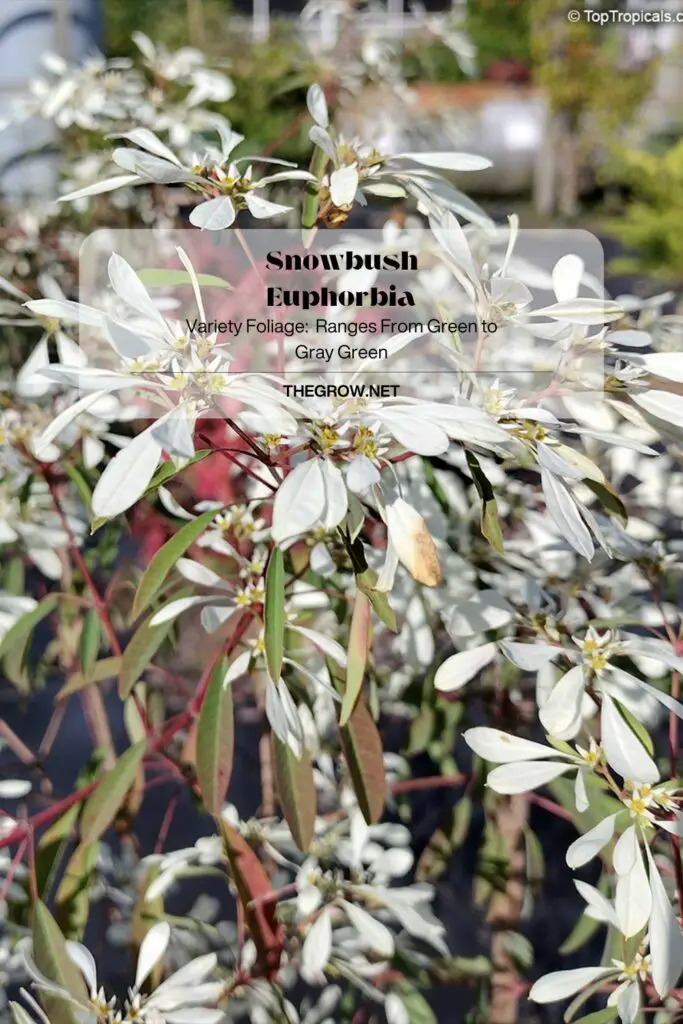
If you are looking for an unusual succulent to add to your collection, consider the Snowbush (Euphorbia leuconeura). This is a small, slow-growing shrub that is native to Madagascar and has white or pale yellow flowers that bloom in spring.
The leaves are thick and fleshy, ranging in color from green to gray-green. Snow Bushes are not tolerant of frost, so they must be grown indoors or in a greenhouse in colder climates.
Frequently Asked Questions
What are some popular varieties of Euphorbia?
Some popular varieties of Euphorbia include Euphorbia milii, also known as “Crown of Thorns,” known for its small, thorny stems and colorful bracts, Euphorbia lactea, known for its unique, white, and green striped branches, Euphorbia pulcherrima, also known as “Poinsettia,” known for its bright red bracts during the winter, and Euphorbia trigona, known for its tall, triangular shaped stem and small green leaves.
How do I care for my Euphorbia milii?
Euphorbia milii prefers bright, indirect light and well-drained soil. It’s important to keep the soil moist but not waterlogged and fertilize regularly. It can be sensitive to changes in temperature and lighting, so it’s important to keep an eye on it and make adjustments as necessary.
Can Euphorbia lactea be grown outside?
Euphorbia lactea can be grown outside in warm climates but it is typically grown as a houseplant. It can be sensitive to changes in temperature and lighting, so it’s best to keep it in a place where it can be protected from direct sun and frost.
What are the ideal temperature and humidity levels for Euphorbia pulcherrima?
Euphorbia pulcherrima prefers warm temperatures between 60°F and 75°F (15°C – 24°C), and moderate humidity levels of around 40-50%. It is important to keep the plant in a location where it can be protected from drafts and sudden temperature changes.
How can I propagate my Euphorbia trigona?
Euphorbia trigona can be propagated by stem cuttings. To propagate, simply plant stem cuttings in the soil, making sure to keep the soil consistently moist but not waterlogged.
It is also possible to propagate Euphorbia trigona by division of the roots, this method is typically done when the plant becomes too large for its container or needs to be divided for another reason. Remember that Euphorbia’s sap can be toxic and cause skin irritation, so it’s essential to use gloves when handling the plant or cutting.
Final Note
Euphorbia is a large and varied genus of plants, with many different species and subspecies. Some are common and easily found in cultivation, while others are rare and hard to come by.
However, all euphorbias have one thing in common: they are beautiful plants worth seeking out.





